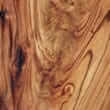Background
- Camphor can be a natural or synthetic product or a mixture of both. The natural product comes from the wood of the camphor tree, Cinnamomum camphora, which is typically found in Asia. Camphor has been used as a flavoring agent in Asian cuisine and in religious ceremonies.
- Camphor and camphor-containing products are generally applied to the skin. Ingestion of such camphor-containing products may result in poisoning and cause a number of adverse and potentially fatal side effects. However, Germany's Commission E has approved camphor for internal and external use for hypotonic circulatory regulation disorders, mucus discharge in the respiratory tract, muscular rheumatism (a painful muscle condition), or cardiac symptoms.
- Several combination products containing camphor and other supplements, such as glucosamine sulfate, chondroitin sulfate, peppermint oil, and hawthorn berries, have been shown to reduce osteoarthritis pain and to benefit patients with a type of low blood pressure called orthostatic hypotension.
References
Natural Standard developed the above evidence-based information based on a thorough systematic review of the available scientific articles. For comprehensive information about alternative and complementary therapies on the professional level, go to . Selected references are listed below.
- Cohen M, Wolfe R, Mai T, et al. A randomized, double blind, placebo controlled trial of a topical cream containing glucosamine sulfate, chondroitin sulfate, and camphor for osteoarthritis of the knee. J Rheumatol 2003;30(3):523-528.
View Abstract - Cold, cough, allergy, bronchodilator, and antiasthmatic drug products for over-the-counter human use; amendment of final monograph for OTC antitussive drug products. Food and Drug Administration, HHS. Final rule. Fed Regist 2000;65(148):46864-46868.
View Abstract - El Shazly AM, Hassan AA, Soliman M, et al. Treatment of human Demodex folliculorum by camphor oil and metronidazole. J Egypt Soc Parasitol 2004;34(1):107-116.
View Abstract - Emery DP, Corban JG. Camphor toxicity. J Paediatr Child Health 1999;35(1):105-106.
View Abstract - Hempel B, Kroll M, Schneider, B. [Efficacy and safety of a herbal drug containing hawthorn berries and D-camphor in hypotension and orthostatic circulatory disorders/results of a retrospective epidemiologic cohort study]. Arzneimittelforschung 2005;55(8):443-450.
View Abstract - Janjua NR, Mogensen B, Andersson AM, et al. Systemic absorption of the sunscreens benzophenone-3, octyl-methoxycinnamate, and 3-(4-methyl-benzylidene) camphor after whole-body topical application and reproductive hormone levels in humans. J Invest Dermatol 2004;123(1):57-61.
View Abstract - Kroll M, Ring C, Gaus W, et al. A randomized trial of Korodin Herz-Kreislauf-Tropfen as add-on treatment in older patients with orthostatic hypotension. Phytomedicine 2005;12(6-7):395-402.
View Abstract - Lee HJ, Hyun EA, Yoon WJ, et al. In vitro anti-inflammatory and anti-oxidative effects of Cinnamomum camphora extracts. J Ethnopharmacol 2006;103(2):208-216.
View Abstract - Lim GC, Chen YF, Liu L, et al. Camphor-related self-inflicted keratoconjunctivitis complicating delusions of parasitosis. Cornea 2006;25(10):1254-1256.
View Abstract - Martin D, Valdez J, Boren J, et al. Dermal absorption of camphor, menthol, and methyl salicylate in humans. J Clin Pharmacol 2004;44(10):1151-1157.
View Abstract - Morsy TA, Morsy, GH, Sanad EM. Eucalyptus globulus (camphor oil) in the treatment of human demodicidosis. J Egypt Soc Parasitol 2002;32(3):797-803.
View Abstract - Naukkarinen H, Raassina R, Penttinen J, et al. Deramciclane in the treatment of generalized anxiety disorder: a placebo-controlled, double-blind, dose-finding study. Eur Neuropsychopharmacol 2005;15(6):617-623.
View Abstract - Prabuseenivasan S, Jayakumar M, Ignacimuthu S. In vitro antibacterial activity of some plant essential oils. BMC Complement Altern Med 2006;6:39.
View Abstract - Wu J. Treatment of rosacea with herbal ingredients. J Drugs Dermatol 2006;5(1):29-32.
View Abstract - Xu H, Blair NT, Clapham DE. Camphor activates and strongly desensitizes the transient receptor potential vanilloid subtype 1 channel in a vanilloid-independent mechanism. J Neurosci 2005;25(39):8924-8937.
View Abstract







